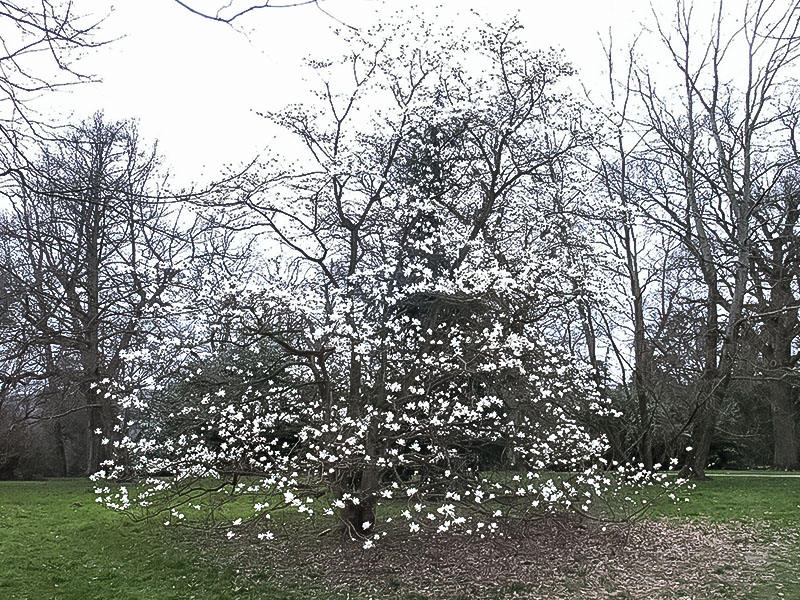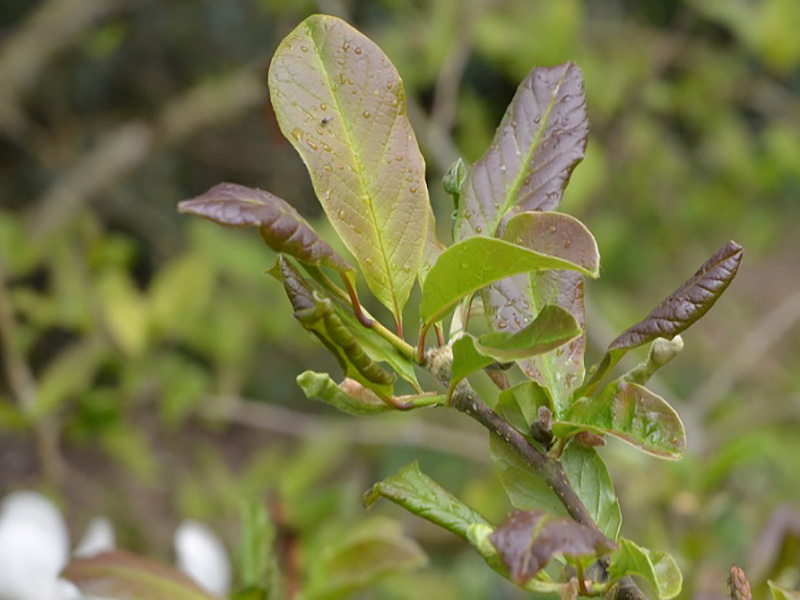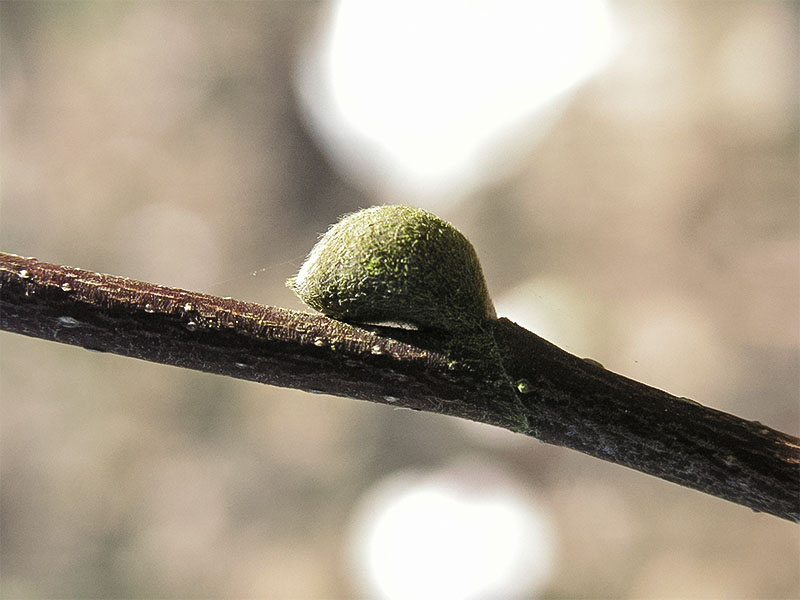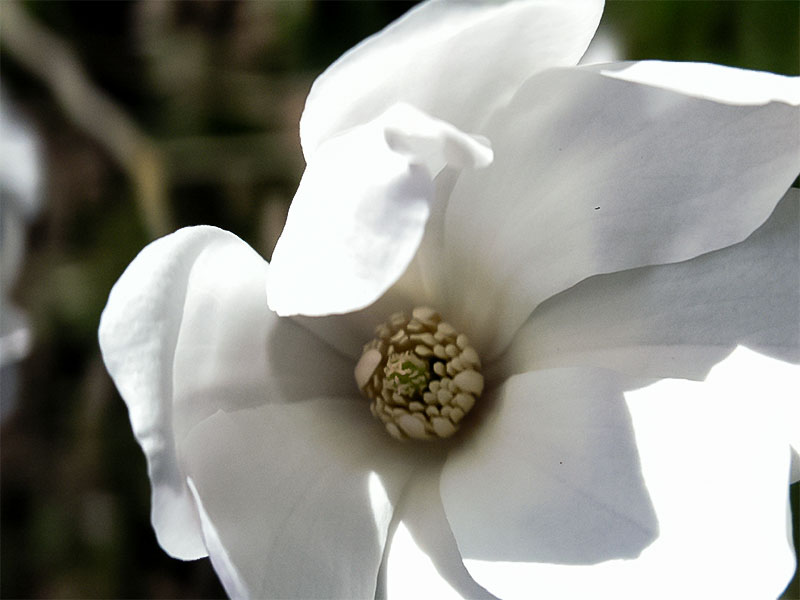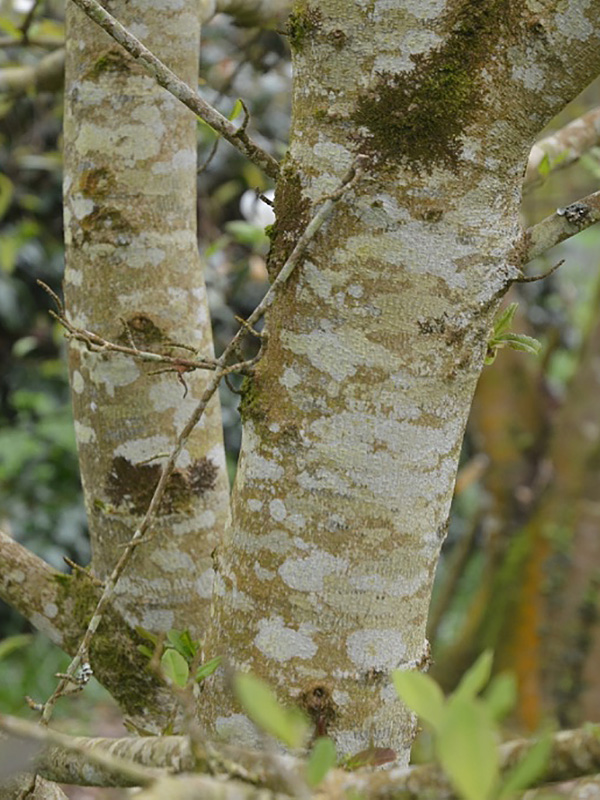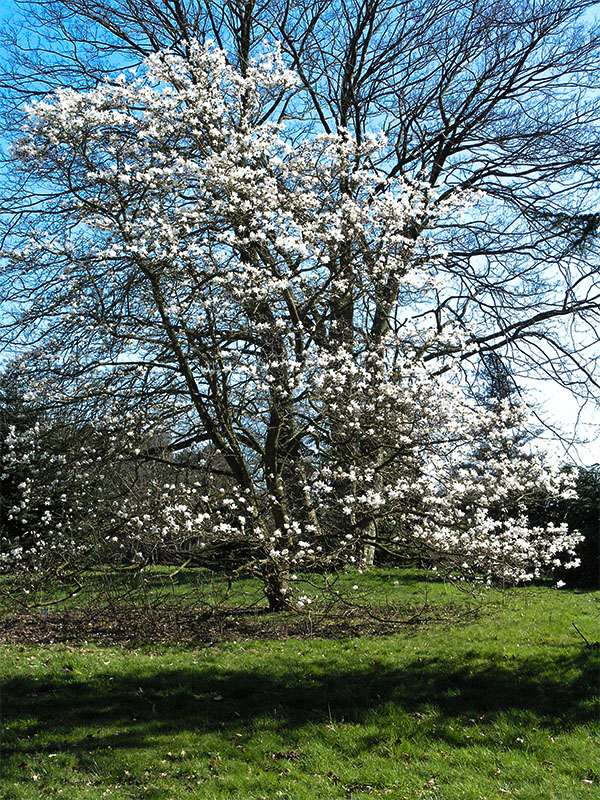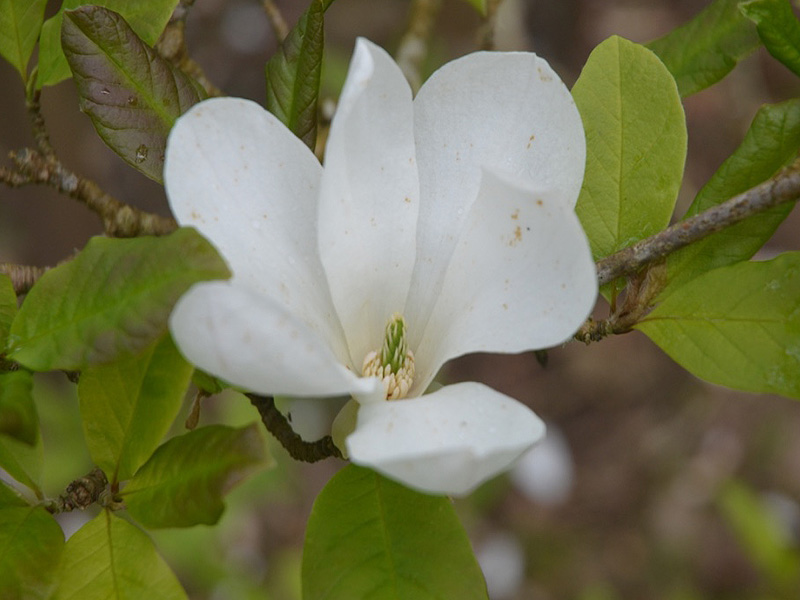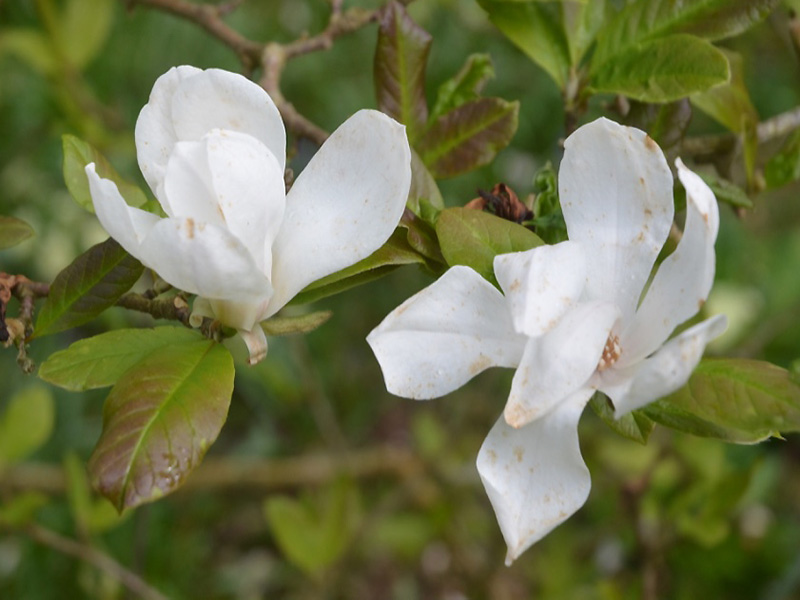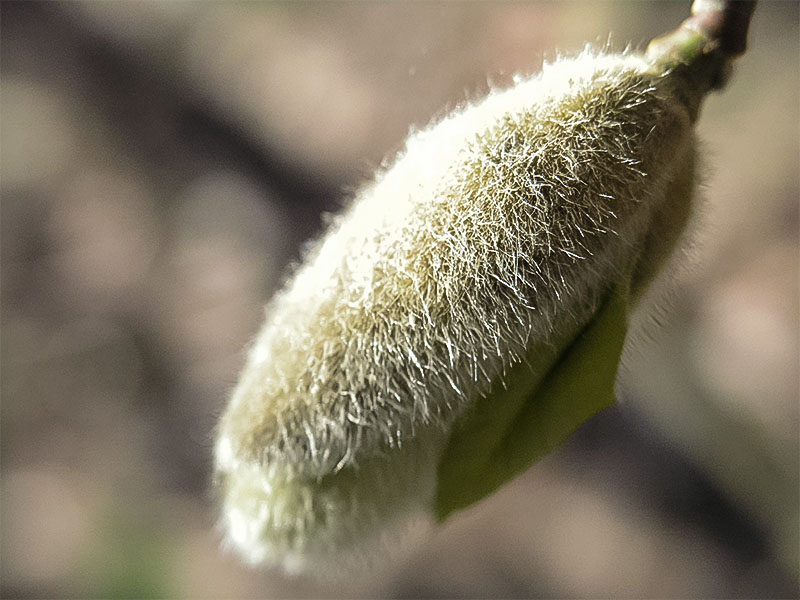| ID Characteristic | Frail stems holding oblong leaves, topped with small white flowers. |
| Shape | Large, pyramidal to rounded crown. |
| Landscape | Informal gardens and container plants. |
| Propagation | Softwood or semi-hardwood cuttings. |
| Cultivation | Grown in partial shade to full sun, in well-drained neutral to acidic soils. |
| Pests | Snails, scale and capsid bug. |
| Notable Specimens | The Mac Cuddy Botanic Gardens, Strathroy, Ontario, Canada. |
| Habitat | Horticultural origin. |
| Bark/Stem Description | Smooth glabrous stems with slightly significant lenticels. Mature bark is more coarse but fragile and susceptible to machinery damage. |
| Flower/Leaf Bud Description | The terminal flower buds are extremely tomentose, are two-scaled and measure 2 - 5 cm in length. Vegetative buds are 1/4 the size of flower buds. |
| Leaf Description | Simple, alternate oblong-pinnate leaves up to 8 cm long. |
| Flower Description | Fragrant white flowers. |
| Colour Description | Characteristically porcelain white flowers with medium to dark green foliage. Dark brown to greyish brown bark. |
| Texture Description | Medium. |
